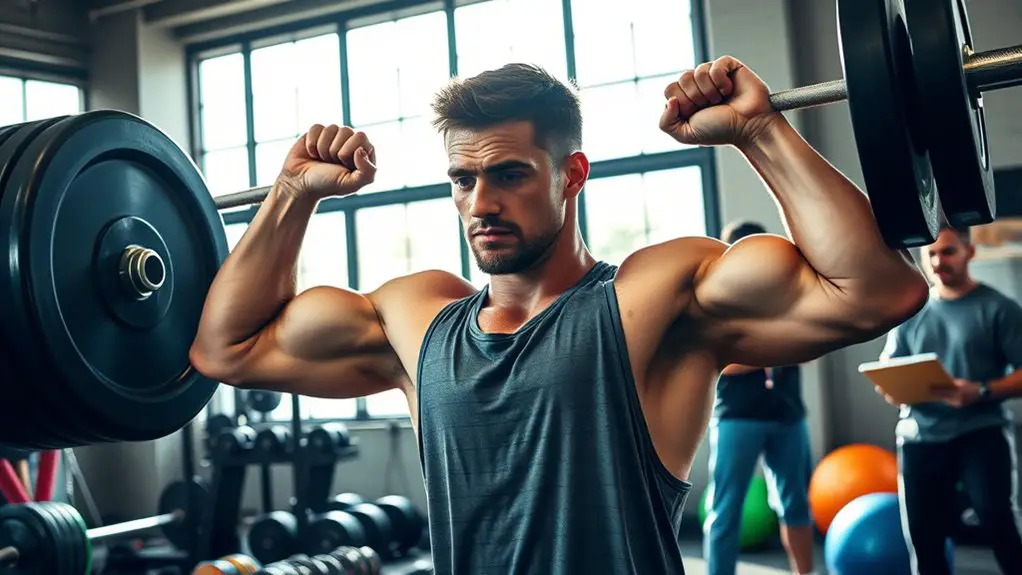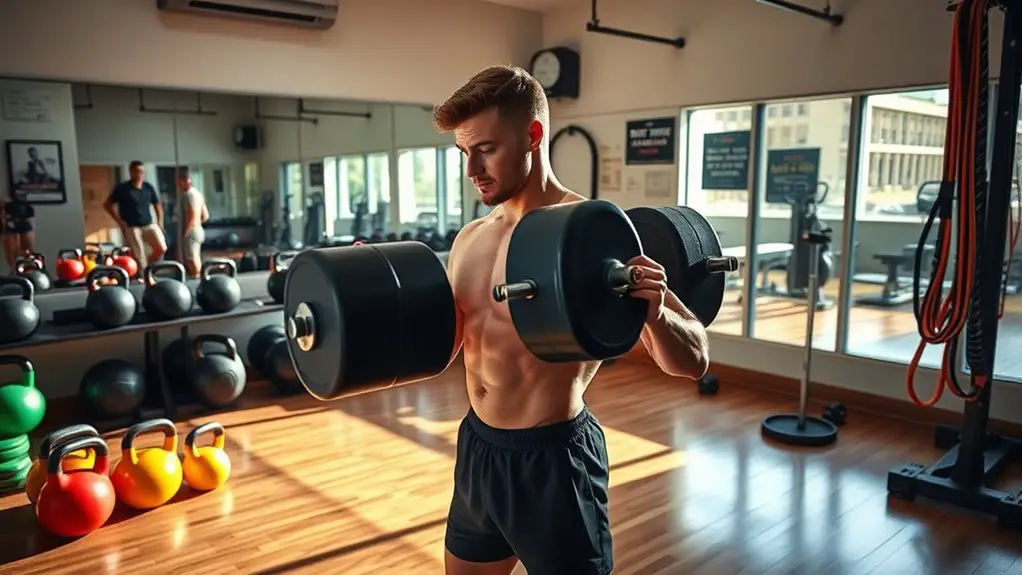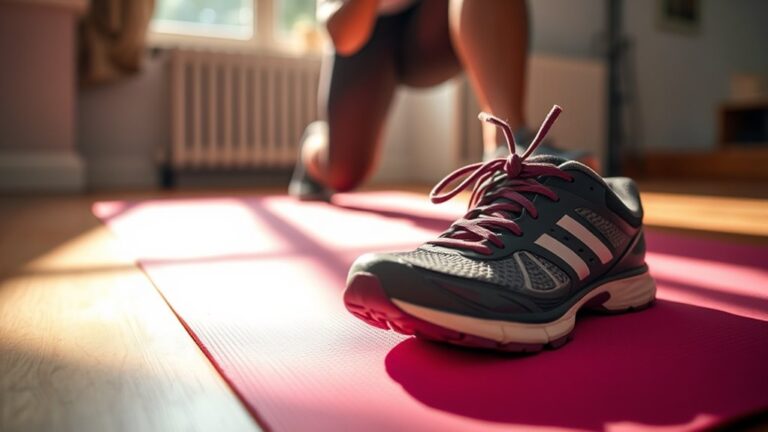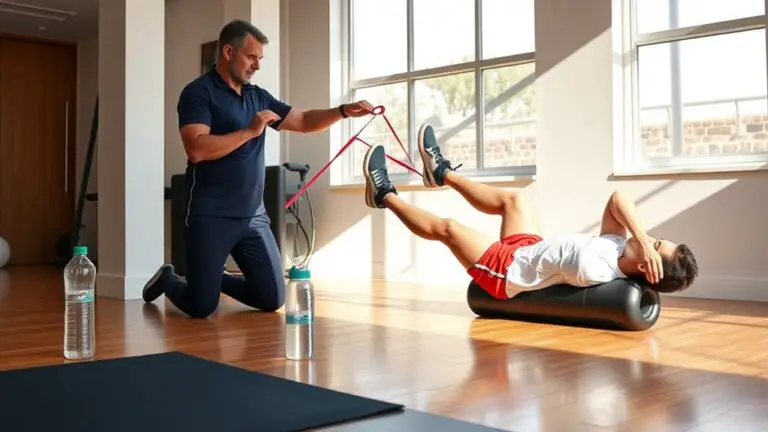The Best Off-Season Strength Training for Athletes

The best off-season strength training for athletes focuses on building strength, endurance, and agility. You should incorporate both compound and isolation exercises tailored to your sport. Prioritize functional movements that mimic game situations, while emphasizing injury prevention techniques like dynamic stretching. Track your progress closely and regularly adjust your goals to stay motivated. This off-season is your chance to recharge and improve—continue exploring strategies that will elevate your training to the next level.
Understanding the Importance of Off-Season Training

While many athletes view the off-season as a time to rest, understanding its importance for strength training can greatly enhance your performance. The off-season offers you unique benefits that can be pivotal in your athletic journey. It’s not just about taking a break; it’s about focusing on athlete recovery and building a stronger foundation for the upcoming season.
During this time, you can target specific weaknesses and enhance your overall strength, which is often overlooked during the busy competition months. By engaging in strategic strength training, you’ll not only recover from the rigors of your sport but also improve your endurance, agility, and power. Incorporating activities like skipping can also improve cardiovascular fitness, which further supports your training goals.
This period allows you to mentally reset while physically preparing your body for the challenges ahead. Embrace the off-season as an opportunity to evolve, ensuring that when it’s time to compete again, you’re not just ready—you’re better than ever.
Key Components of Strength Training
To maximize your off-season strength training, you need to focus on key components that drive results. Understanding the difference between compound and isolation exercises, applying progressive overload principles, and developing functional strength will elevate your performance. Embrace these elements, and you’ll set yourself up for success when the season rolls around. Additionally, incorporating effective cardio workouts like skipping rope can enhance your overall fitness and support your strength training goals.
Compound vs. Isolation Exercises
When it comes to off-season strength training, understanding the difference between compound and isolation exercises can make a significant impact on your performance. Compound exercises, like squats and deadlifts, engage multiple muscle groups, offering compound benefits such as increased strength and improved functional movement. They’re efficient, helping you build overall power and coordination, which is essential for athletic success. On the other hand, isolation exercises focus on single muscles, allowing for targeted strengthening. However, isolation drawbacks include less functional carryover to sports performance and a longer time commitment for equivalent gains. For ideal results, prioritize compound movements in your routine, and use isolation exercises strategically to address any muscle imbalances. Embrace the challenge, and watch your performance skyrocket!
Progressive Overload Principles
Understanding progressive overload principles is essential for any athlete looking to enhance strength and performance. This concept revolves around gradually increasing the demands on your muscles, leading to effective strength adaptation. Here are three key components to implement:
- Increase Resistance: Gradually lift heavier weights to challenge your muscles.
- Adjust Reps and Sets: Modify the number of repetitions and sets to push your limits.
- Vary Exercise Intensity: Incorporate different training modalities and techniques to keep your body guessing.
Functional Strength Development
After grasping the principles of progressive overload, it’s time to focus on functional strength development, which emphasizes strength that translates directly to athletic performance. Building functional mobility is essential; it guarantees your body can move efficiently through various ranges of motion. Incorporate exercises like squats, lunges, and kettlebell swings that mimic your sport-specific movements.
Don’t forget about strength endurance, too. This aspect helps you maintain peak performance throughout your game or match. High-rep circuits or resistance training with lighter weights can enhance your stamina while still building strength. Remember, the goal is to create a robust foundation that enhances your athletic capabilities and reduces injury risk. Stay committed, and you’ll see the benefits on the field or court!
Developing a Personalized Strength Training Program
Developing a personalized strength training program is essential for maximizing your athletic potential, as it guarantees that the training aligns with your specific goals, abilities, and sport demands. To create an effective program, consider these three key components:
- Assess Your Personal Goals: Identify what you want to achieve—whether it’s building strength, increasing endurance, or enhancing power.
- Determine Training Frequency: Decide how often you can commit to training each week. This assures consistency and progress without risking burnout or injury.
- Tailor Exercises to Your Sport: Select exercises that mimic the movements and energy systems used in your sport, ensuring your training is relevant and applicable.
Incorporating Functional Movements

Incorporating functional movements into your off-season training can greatly enhance your athletic performance. These exercises mimic real-life activities, improving your strength, balance, and coordination in ways that traditional workouts may not. By integrating key functional exercises into your routine, you’ll build a solid foundation that supports your specific sport and helps prevent injuries.
Benefits of Functional Training
While many athletes focus solely on traditional strength training, the benefits of functional training can’t be overlooked. Incorporating functional movements into your routine enhances your athletic performance by improving strength, stability, and coordination. Here are three key benefits of functional fitness:
- Real-World Application: Functional training mimics everyday movements, making you more efficient in your sport and daily activities.
- Injury Prevention: By building strength in a thorough manner, you reduce the risk of injuries that can sideline you during the season.
- Improved Mobility: These exercises promote flexibility and balance, essential for peak performance in any athletic endeavor.
Integrating functional training into your off-season regimen will set you up for success and elevate your game to new heights.
Key Functional Exercises
Open your full athletic potential by adding key functional exercises to your off-season training. These exercises are designed to enhance your core stability and overall movement patterns, making you a more versatile athlete. Incorporate mobility drills like dynamic stretching and hip openers to improve your range of motion and prevent injuries. Focus on compound movements such as squats, lunges, and deadlifts to engage multiple muscle groups and build strength. Don’t forget to include exercises like planks and kettlebell swings to further develop your core stability. By integrating these functional movements, you’ll not only boost your performance but also create a solid foundation for the upcoming season. Embrace this opportunity to elevate your game and train smart!
Integrating Movements in Routine
To maximize your off-season strength training, seamlessly integrating functional movements into your routine is essential. By focusing on effective movement patterns, you’ll enhance your performance and decrease injury risk. Here are three key strategies to evaluate:
- Compound Exercises: Incorporate squats, deadlifts, and bench presses that engage multiple muscle groups, improving overall strength.
- Dynamic Movements: Add exercises like kettlebell swings and medicine ball throws to develop power and agility.
- Progressive Overload: Gradually increase your training frequency and resistance to continually challenge your muscles and promote growth.
Injury Prevention Strategies

Injury prevention is vital, especially during the off-season when athletes often push their limits to gain a competitive edge. To stay in top shape and avoid setbacks, you should incorporate effective rehabilitation techniques and mobility exercises into your training routine. Start with dynamic stretching to enhance flexibility and increase range of motion, which can greatly reduce injury risk.
Focus on strengthening smaller, often neglected muscle groups through targeted exercises. This not only builds stability but also supports your primary muscles during high-intensity training. Don’t forget to include rest days for recovery; your body needs time to heal and adapt. Additionally, be mindful of proper technique, as it can significantly lower the risk of knee injuries during training.
Finally, listen to your body. If you feel persistent pain or discomfort, it’s important to address it immediately with appropriate rehabilitation techniques. By prioritizing these strategies, you’ll not only enhance your performance but also guarantee you’re ready to hit the ground running when the season begins.
Monitoring Progress and Adjusting Goals
As you progress through your off-season training, monitoring your achievements and adjusting your goals is essential for continued improvement. Effective goal tracking and performance metrics will help you stay on track and motivated. Here are three key strategies to implement:
- Set Specific Benchmarks: Identify clear, measurable goals based on your previous performance metrics. This allows you to see tangible progress over time.
- Use a Training Log: Document your workouts, noting weights lifted, reps completed, and any personal bests. This log serves as a motivational tool and a reference for adjustments.
- Regularly Review and Adjust Goals: Every few weeks, evaluate your progress. If you’re hitting your targets, increase the intensity or set new goals. If not, adjust your approach to guarantee you’re on the right path.
Frequently Asked Questions
How Long Should an Off-Season Strength Training Program Last?
When considering the program duration for your off-season strength training, aim for around 8 to 12 weeks. This timeframe allows for effective training phases, focusing on building strength, endurance, and skill. You’ll want to structure your program with progressive overload to keep challenging your muscles. Remember, consistency is key! Stay committed, and you’ll see significant improvements. Tailor your approach to fit your needs, ensuring you’re ready for the upcoming season.
What Equipment Is Essential for Off-Season Training at Home?
Imagine building a sturdy house; you need the right tools to create a solid foundation. For your off-season training at home, essential equipment includes resistance bands and dumbbell sets. Resistance bands provide versatility, allowing you to target various muscle groups effectively, while dumbbell sets enable you to gradually increase weights as you progress. With these tools in your arsenal, you’ll be well-equipped to strengthen your body and elevate your performance when it matters most.
Can Strength Training Improve My Sport-Specific Skills?
Absolutely, strength training can greatly enhance your sport performance and skill enhancement. It builds the muscle power and endurance you need for those critical game moments. By focusing on specific muscle groups used in your sport, you’ll improve your agility, speed, and overall coordination. Incorporating strength training into your routine isn’t just about lifting weights; it’s about developing the functional strength that translates directly to better performance on the field or court.
How Can I Stay Motivated During Off-Season Training?
Imagine your off-season as a canvas, waiting for vibrant strokes of dedication. To keep your motivation high, start with clear goal setting; define what you want to achieve. Surround yourself with training partners who spark your enthusiasm—like a fire that fuels your passion. Share progress, challenges, and victories together. Remember, it’s not just about the destination but the journey you share, making each workout a step closer to your dreams.
Are There Any Dietary Recommendations to Complement Strength Training?
To complement your strength training, focus on nutrient timing and protein intake. Aim for a balanced meal with protein and carbs within 30 minutes post-workout to optimize recovery. Consider incorporating lean meats, dairy, or plant-based proteins to meet your daily needs. Staying hydrated is essential, too. Remember, fueling your body properly not only supports muscle growth but also keeps you energized and motivated throughout your training journey. You’ve got this!





